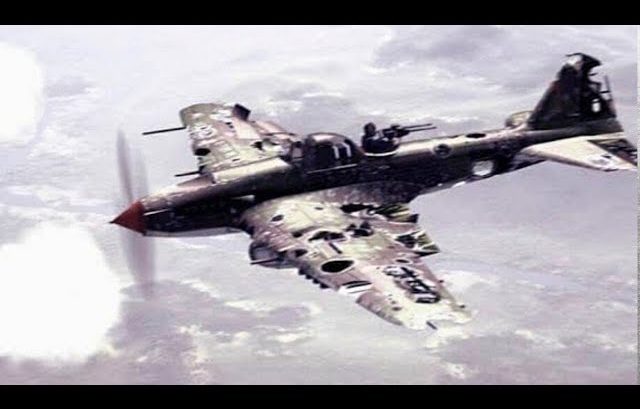Vasily Emelianenko’s entire united Ilyushin Il-2 Sturmovik ground attack had just decimated an entire German-controlled airfield in Easter Ukraine.
In retaliation, Storm Birds rained hell on the rows of Luftwaffe aircraft. Emelianenko’s engine was shot. He made a brief landing on the open terrain and ran into the woods before a German sniper could pick him up.
Emelianenko landed safely and survived thanks to the resilience of the Sturmovik, whose whole fuselage was made out of pure steel armor. This was only just the beginning of the aircraft’s career as it made a crucial role at the Battle of Kursk.
A Flying Tank
The premise behind the Sturmovik warplanes was fielding a flying tank that combined firepower, armor protection, and performance neutralizing unarmored and armored ground targets.
The aircraft was designed to absorb intense ground-based fire first and enemy aircraft fire second.
Specifications
The Sturmovik was armed with five 7.62 mm machine guns, one of which was used for defense, and two 23 mm cannons.
The fuselage was tapered at the tail where a single vertical fin was affixed along with low-set horizontal planes with rounded tips.
The Slaughterer
In June of 19142, pilot Vasily Emelianenko and his squad of Sturmoviks were dispatched to a German airfield in Eastern Ukraine to destroy as many aircraft as possible.
The Germans retaliated with machine gun fire, but the plane’s rugged armor proved it could withstand damage.
Concrete Plane
Soviet Union hero Valentin Averanov wrote in his memoirs, “Despite the fact that the armor offered no protection from 20 mm anti-aircraft rounds and guns, it still deflected many types of munitions.
The plane’s heavy armor would eventually lead the Germans to call it the “Concrete Plane.”
Wreaking Havoc
During the Battle of Kursk, the Sturmoviks dropped the PTABs from altitudes of over 320 feet with a damage zone ranging from 50 to 230 feet.
According to Soviet sources, over 70 enemy tanks from the 9th Panzer Division were destroyed by Sturmoviks in just 20 minutes.



